In the rapidly evolving world of LED lighting, the CSP LED strip has emerged as a leading choice for both residential and commercial applications. This comprehensive guide to CSP LED strips will provide you with an in-depth understanding of their advantages, features, and applications, helping you make an informed decision when selecting the perfect lighting solution for your needs. Join us as we explore the world of CSP LED strips and discover how they can transform your lighting experience.
Introduction
What is a CSP LED strip?
A CSP LED strip is a type of flexible lighting solution that utilizes Chip Scale Package (CSP) LEDs, which are compact and highly efficient light-emitting diodes. These LEDs are attached to a flexible Printed Circuit Board (PCB) and covered with a translucent, milky-white silicone coating. The small size and integrated design of CSP LEDs result in lower thermal resistance, fewer heat transfer paths, and greater reliability compared to traditional LED packages. With their excellent performance, CSP LED strips are increasingly being used for various lighting applications, including residential, commercial, and architectural projects.
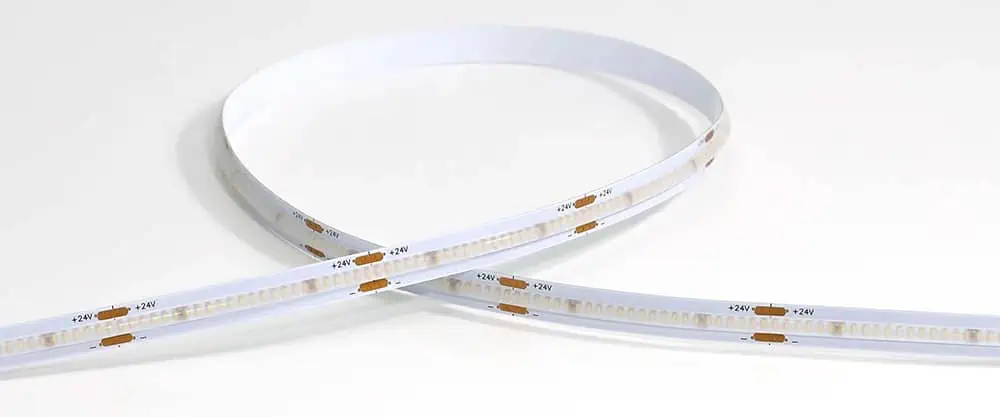
The benefits of using CSP LED strips
CSP LED strips offer a range of benefits that make them an attractive choice for various lighting applications. Some of these advantages include:
High Luminous Efficiency
CSP LEDs boast higher light output and energy efficiency compared to traditional LED packages. Their translucent silicone coating ensures better light transmittance, resulting in brighter illumination.
Better Color Consistency
CSP LED strips have superior color consistency due to their precise binning process, which ensures uniform color temperature and reduced color variation across the strip. For more detail information, you can check What Is LED Binning?
Compact Size and Flexibility
The small size of CSP LEDs allows for high-density LED arrangement on the strip, enabling a sleeker and more compact design. This makes CSP LED strips ideal for use in tight spaces or intricate lighting installations.
Enhanced Reliability
CSP LEDs do not require solder gold wire connections, which reduces the number of potential failure points. This leads to improved durability and longer lifespan for the LED strip.
Easy Installation
CSP LED strips can be cut to length and easily installed in a variety of settings, making them a versatile and user-friendly lighting solution.
Wide Applicability
Due to their excellent performance characteristics, CSP LED strips can be used in a range of applications, including residential, commercial, and architectural lighting projects, as well as for accent, task, or ambient lighting purposes.
In summary, CSP LED strips offer numerous benefits, such as high luminous efficiency, better color consistency, compact design, enhanced reliability, and versatility, making them a popular choice for modern lighting solutions.
Applications of CSP LED strips
Residential Lighting

Under-cabinet lighting in kitchens and bathrooms: CSP LED strips provide bright, focused illumination for countertops and workspaces, enhancing visibility and safety. For more information, you can read How To Choose the LED Strip Lights For Kitchen Cabinets?
Cove lighting and accent lighting in living rooms and bedrooms: Adding a warm, ambient glow to create a cozy and inviting atmosphere. For more information, you can read Cove Lighting: The Definitive Guide.
Staircase and hallway illumination: Ensuring safe navigation while adding a stylish touch to your home’s interior design. For more information, you can read 16 Stair Lighting Ideas With LED Strip Lights.
Commercial Lighting

Display case and shelf lighting in retail stores: Showcasing products with vibrant, uniform illumination to attract customers and boost sales.
Task lighting in offices and workshops: Improving productivity by providing efficient and comfortable lighting for workspaces.
Architectural lighting for hotels, restaurants, and bars: Enhancing the ambiance and visual appeal of commercial spaces to create memorable experiences for guests.
Outdoor and Landscape Lighting

Pathway and step lighting: Guiding visitors safely through outdoor spaces while adding visual interest and curb appeal.
Patio, deck, and poolside illumination: Creating a relaxing and enjoyable atmosphere for outdoor gatherings and entertainment.
Garden and landscape feature lighting: Highlighting the beauty of your green spaces and showcasing the intricate details of landscape designs.
Signage and Advertising

Illuminated signs and billboards: Increasing visibility and drawing attention to your brand or message.
Logo and branding backlighting: Enhancing the impact of corporate identities and promotional materials.
Exhibition and trade show displays: Ensuring your products and services stand out in crowded event spaces.
Automotive and Marine Lighting

Interior and exterior vehicle lighting: Improving safety and visibility on the road while adding a touch of personal style to your vehicle.
Accent and decorative lighting for boats and yachts: Enhancing the aesthetic appeal and functionality of marine vessels for a luxurious experience on the water.
Entertainment and Stage Lighting

Theater, concert, and event lighting: Captivating audiences with dynamic and engaging visual effects.
Special effects and mood lighting in clubs and entertainment venues: Creating immersive and memorable experiences for patrons and partygoers.
CSP LED strips are versatile and adaptable, making them suitable for a wide range of applications in various settings. Their high efficiency, reliability, and color consistency make them an ideal choice for both professional and personal use.
Understanding CSP LED Technology
CSP, or Chip Scale Package, is an advanced packaging technology that has had a significant impact on the LED industry. In the following content, we will explore how CSP technology enhances LED strips and compare CSP LED strips to other LED technologies.
Chip Scale Package (CSP) explained
Chip Scale Package (CSP) is an advanced packaging technology in the field of integrated circuits and LED manufacturing. Developed in 1994 by Japan’s Mitsubishi Corporation, CSP has since become a popular choice for many electronic applications due to its numerous advantages.
CSP technology refers to a packaging process where the size of the package is no more than 20% larger than the size of the semiconductor chip itself. This compact packaging design allows for greater integration and miniaturization, resulting in smaller, lighter, and more efficient electronic devices.
In the LED industry, CSP technology involves the use of gold-free wire flip-chip processes. In this approach, the blue LED chip is directly bonded to the PCB board through the pole pad. The LED is then coated with fluorescent glue on the chip’s surface. This eliminates the need for traditional wire bonding and brackets, which are common in Surface Mounted Device (SMD) LED packages.


How CSP technology enhances LED strips
CSP technology offers numerous benefits for LED strips. These advantages include:
Higher luminous efficiency: Due to the compact packaging design and fewer heat transfer paths, CSP LED strips provide higher light output per watt.
Improved color consistency: CSP LED strips can achieve 3-step Macadam color tolerance, ensuring better color uniformity across the strip.
Enhanced reliability: CSP LEDs eliminate the need for solder wire connections, resulting in fewer possible points of failure.
Compact design: The small size of CSP LEDs allows for higher LED density, enabling more flexible and versatile lighting applications.
Comparing CSP LED strips to other LED technologies
When it comes to LED strips, there are several technologies to choose from. Two popular alternatives to CSP LED strips are COB (Chip on Board) LED strips and SMD (Surface Mounted Device) LED strips. Each of these technologies has its own set of advantages and disadvantages, and understanding their differences can help you make an informed decision for your lighting needs.
CSP LED Strip VS COB LED Strip
CSP and COB LED strips both provide high-quality lighting solutions but differ in certain aspects. CSP LED strips offer better color consistency and higher light efficiency due to their compact packaging design, while COB LED strips excel in light uniformity. In most cases, the choice between CSP and COB LED strips will depend on the specific requirements of your lighting project. For more information, you can read CSP LED Strip VS COB LED Strip.
| Feature | CSP LED Strip | COB LED Strip |
| Appearance | Translucent milky white glue | Yellow glue mixed with phosphor |
| Color Tolerance | 3-step Macadam | 5-step Macadam |
| Light Efficiency | Higher light efficiency | Lower light efficiency |
| Light Uniformity | Less uniform, may show light spots | More uniform, no light spot effect |
| Light Color | No yellow light on the edge, soft light | Yellow light on the edge |
| Beam Angle | 180 degree | 180 degree |

CSP LED Strip VS SMD LED Strip
CSP and SMD LED strips are both popular choices for various applications, but they differ in terms of size, heat dissipation, color consistency, and application flexibility. CSP LED strips, with their compact design and improved heat dissipation, are more versatile and provide better color consistency than SMD LED strips. However, SMD LED strips have been a reliable choice for many years and continue to be used in a wide range of lighting applications. Ultimately, the decision between CSP and SMD LED strips will depend on the specific requirements and constraints of your project.
| Attribute | CSP LED Strip | SMD LED Strip |
| Size | Smaller, more compact | Larger, less compact |
| Heat Dissipation | Better heat dissipation | Inferior heat dissipation |
| Color Consistency | 3-step Macadam | 3-step Macadam |
| Light Uniformity | High density, less hot spot | Lower density, more hot spot |
| Application Flexibility | More versatile and flexible | Less versatile and flexible |
| Beam Angle | 180 degree | 120 degree |
In conclusion, CSP LED strips offer a range of advantages over other LED technologies, including higher light efficiency, better color consistency, and improved reliability. These features make them an excellent choice for various lighting applications, from residential to commercial and industrial settings.

Types of CSP LED Strips
CSP LED strips come in various types, catering to different lighting needs and applications. Let’s explore the different types of CSP LED strips available in the market.
Single Color CSP LED Strips
Single color CSP LED strips emit a single, fixed color, such as warm white, cool white, or any other solid color like red, green, or blue. These strips are perfect for creating a specific ambiance or for accent lighting. Due to their simplicity, single color CSP LED strips are an affordable and popular choice for various residential and commercial applications.
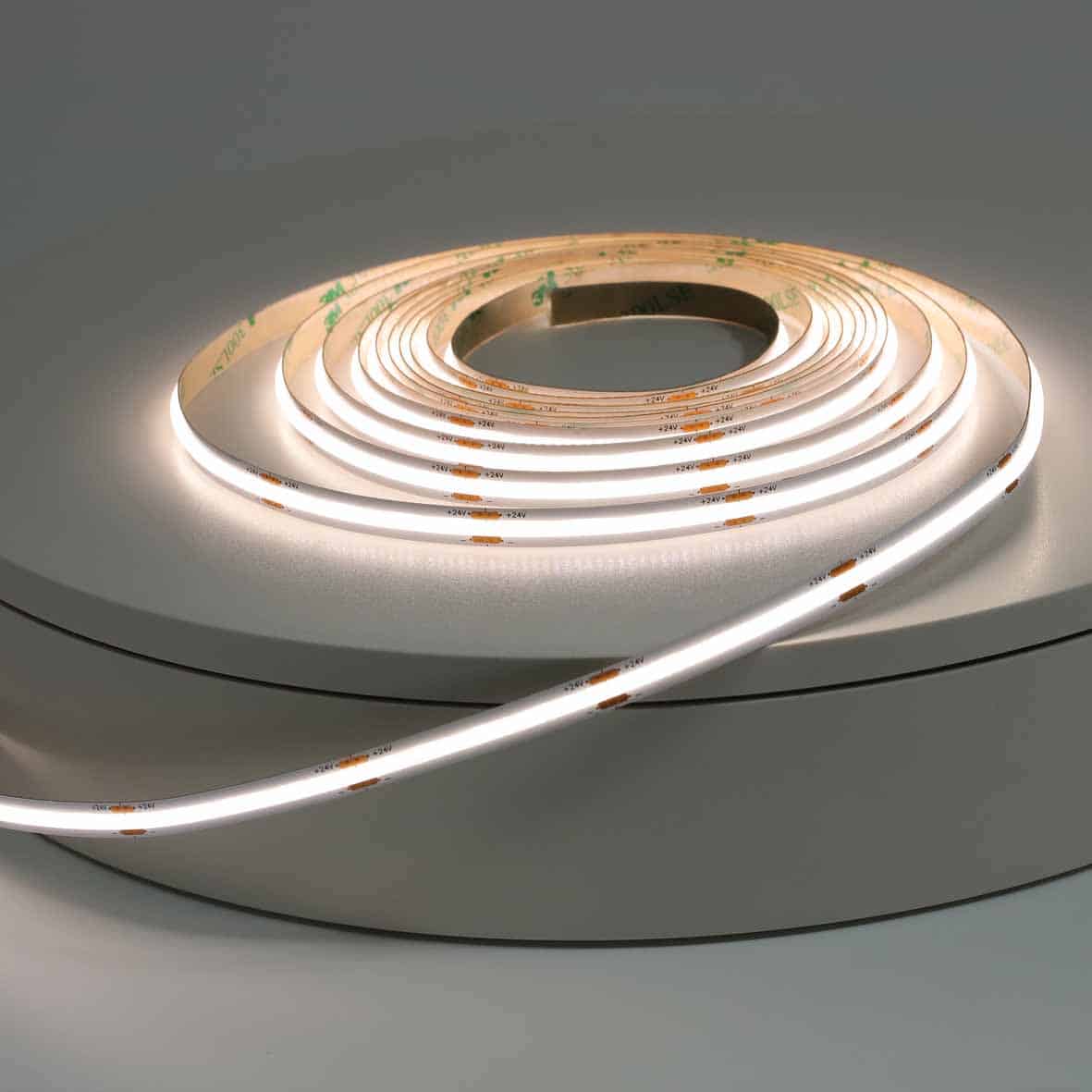

Tunable White CSP LED Strips
Tunable white CSP LED strips allow users to adjust the color temperature of the white light emitted by the strip. With these strips, you can change the color temperature from warm white to cool white or any shade in between. Tunable white LED strips are ideal for creating dynamic lighting environments that can be adjusted to suit a specific mood or purpose, such as task lighting or relaxation.


RGB, RGBW and RGBTW CSP LED Strips
RGB CSP LED strips feature red, green, and blue LEDs, which can be mixed to create a wide range of colors. RGBW CSP LED strips add a dedicated white LED, allowing for even more color options and better white light performance. These LED strips are perfect for decorative lighting, mood lighting, or creating a dynamic lighting experience in any space.



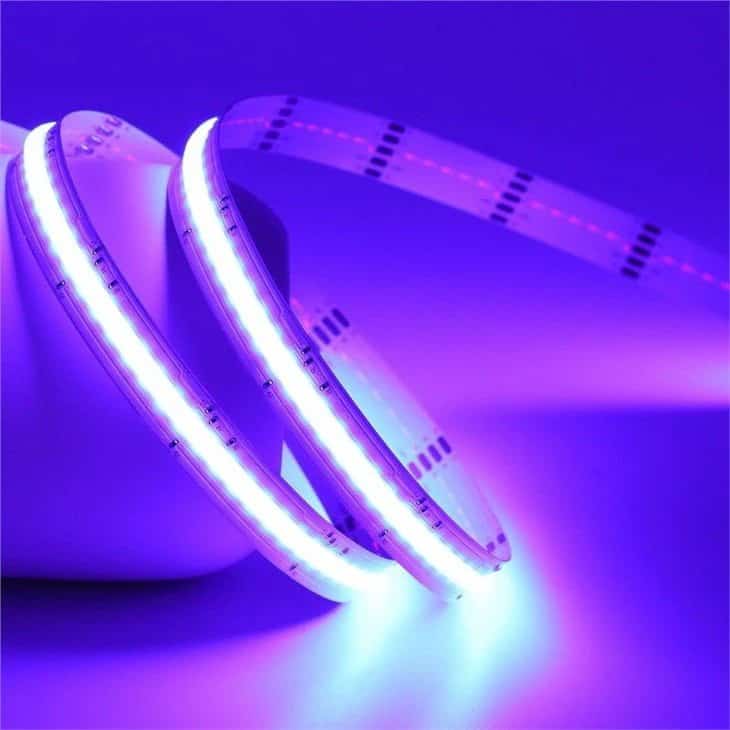

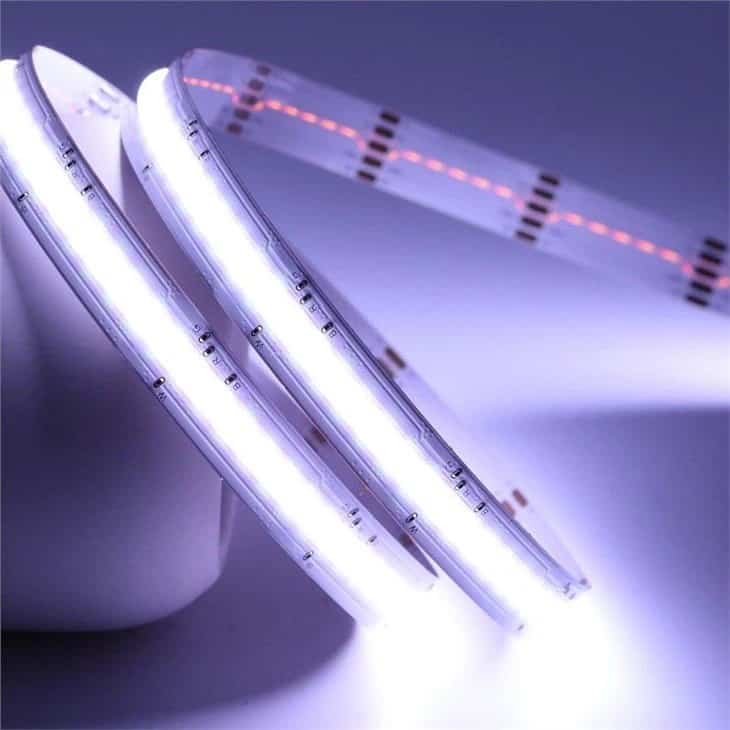
Addressable CSP LED Strips
Addressable CSP LED strips, also known as digital LED strips or pixel LED strips, allow for individual control of each LED on the strip. This enables the creation of intricate color patterns, animations, and effects. Addressable CSP LED strips are perfect for interactive installations, stage lighting, and other creative applications that require precise control and customization.

High-density CSP LED Strips
High-density CSP LED strips pack more LEDs per meter or foot than standard LED strips, resulting in a more uniform light output and fewer visible light spots. These strips are ideal for applications where a smooth, continuous line of light is required, such as under-cabinet lighting, cove lighting, or backlighting of translucent surfaces. High-density CSP LED strips often come with improved heat dissipation and higher light output, making them suitable for more demanding installations.

Key Features and Specifications
When selecting a CSP LED strip, it’s important to consider several key features and specifications that can greatly impact the performance, quality, and longevity of the product. Here are some crucial factors to keep in mind:
Luminous efficacy
Luminous efficacy refers to the amount of light (lumens) emitted per unit of electrical power (watts) consumed. A higher luminous efficacy means the LED strip is more energy-efficient and produces more light with less power. When comparing CSP LED strips, choose one with a higher luminous efficacy to ensure you’re getting the most light output for your energy consumption.
Color Rendering Index (CRI)
The Color Rendering Index (CRI) is a scale from 0 to 100 that measures how accurately an LED light source renders colors compared to natural daylight. A higher CRI value indicates better color rendering, which is essential for applications where accurate color representation is crucial, such as in art galleries, retail displays, or photography studios. Look for CSP LED strips with a CRI value of at least 80 for general use, and 90 or higher for applications that require exceptional color accuracy.
Ingress Protection (IP) ratings
Ingress Protection (IP) ratings are a standardized system that classifies the level of protection an LED strip has against dust and water intrusion. The IP rating consists of two digits: the first digit indicates the level of protection against solids (e.g., dust), and the second digit indicates the level of protection against liquids (e.g., water). For example, an IP65-rated LED strip is dust-tight and can withstand low-pressure water jets. Choose a CSP LED strip with an appropriate IP rating based on the intended installation environment and exposure to dust or moisture.
Lifetime and reliability
The lifetime and reliability of a CSP LED strip are essential factors to consider, as they can impact the overall cost of ownership and maintenance. LED strips with longer lifetimes and better reliability are more cost-effective in the long run, as they require less frequent replacement or maintenance. To ensure you’re getting a high-quality CSP LED strip, look for products that have undergone rigorous testing, including thermal shock, distortion, and temperature cycling tests. Additionally, consider the manufacturer’s warranty and support to ensure you’re covered in case of any issues with the product.
Choosing the Right CSP LED Strip
Selecting the perfect CSP LED strip for your project can be a complex task, given the wide range of options available. To make the right choice, consider the following factors:
Understanding your lighting requirements
Before selecting a CSP LED strip, it’s essential to understand your lighting requirements. Consider factors such as the desired brightness, color temperature, color rendering, and beam angle. Also, evaluate the installation environment, including potential exposure to dust, moisture, and extreme temperatures, as these factors can impact the LED strip’s performance and durability.
Selecting the appropriate strip type
Based on your lighting requirements, choose the appropriate CSP LED strip type that best suits your needs. Here are some options:
Single Color CSP LED Strips: Ideal for creating a consistent, monochromatic ambiance.
Tunable White CSP LED Strips: Offer adjustable color temperatures for customizing the lighting to match different moods or tasks.
RGB and RGBW CSP LED Strips: Allow for dynamic color changing and mixing, perfect for creating vibrant and colorful lighting effects.
Addressable CSP LED Strips: Provide individual control over each LED for creating complex lighting patterns, animations, or effects.
High-density CSP LED Strips: Feature closely-packed LEDs for a smoother, more uniform light output with minimal spotting.
Considering power and voltage options
When selecting a CSP LED strip, consider the power and voltage requirements of your project. Most LED strips are available in 12V or 24V options, with the latter being more energy-efficient and better suited for longer runs without significant voltage drop. It’s essential to use the appropriate power supply and ensure it can handle the total wattage required by the LED strip. Additionally, consider any power-related safety precautions, such as using proper cables, connectors, and drivers, to ensure a safe and reliable installation.
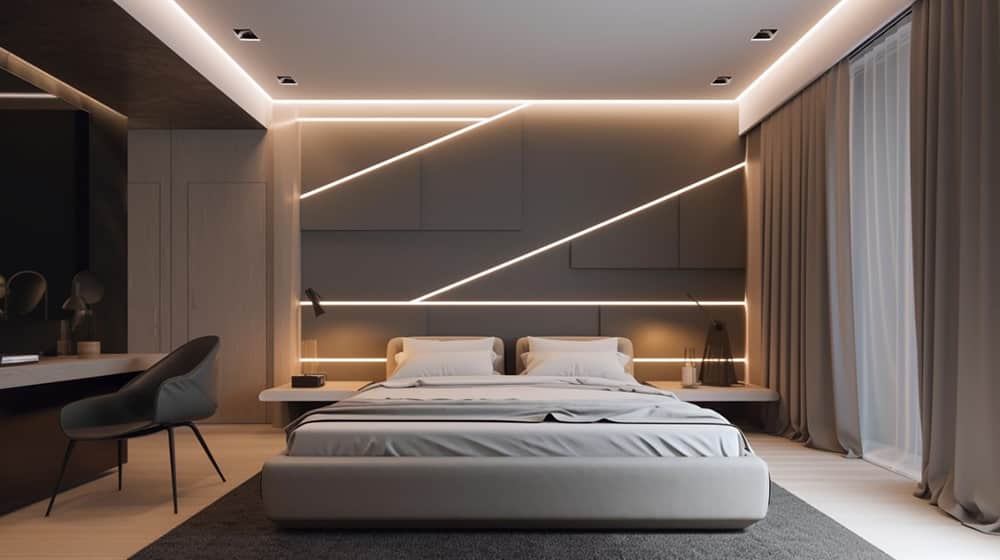
Installation and Mounting
Installing CSP LED strips can be a relatively simple process if you follow the right steps and have the appropriate tools and materials at hand. Below, we outline the essential aspects of the installation process.
Tools and materials needed
Before starting the installation, gather all the necessary tools and materials, including:
- CSP LED strip of your choice
- Compatible power supply or LED driver
- Mounting clips or adhesive backing (depending on the strip type)
- Connectors or soldering equipment (if required)
- Wire strippers and electrical tape
- Measuring tape and a pencil or marker
Preparing the installation area
First, measure the installation area and ensure the surface is clean, dry, and free from debris or dust. This step is crucial, as a clean surface allows for better adhesion of the LED strip and ensures a secure installation.
Installing and securing the strip
Depending on the type of CSP LED strip you’ve chosen, there are different methods to secure the strip:
For adhesive-backed strips, peel off the backing and press the strip firmly onto the surface along your desired path. Apply even pressure to ensure a strong bond.
For strips without adhesive backing, use mounting clips or brackets to secure the strip at regular intervals. Attach the clips to the surface first and then snap the LED strip into place.
Ensure the strip is installed straight and without any twisting or kinking.
Connecting the power supply
Once the LED strip is securely installed, connect it to the appropriate power supply or LED driver. This process may involve using connectors, soldering wires, or connecting the strip directly to a compatible power supply. Be sure to follow the manufacturer’s instructions for your specific CSP LED strip and power supply. After making all the necessary connections, test the LED strip to ensure it functions correctly and provides the desired lighting effect.

Powering Your CSP LED Strips
CSP LED strips require an appropriate power supply to function correctly and efficiently. Choosing the right power supply, calculating power requirements, and ensuring safe power distribution are essential steps in the installation process.
Power supply options
CSP LED strips typically require a compatible power supply or LED driver to convert the incoming AC voltage to the DC voltage needed by the strip. There are several power supply options available, including:
Plug-in power adapters: These are simple and easy to use, plugging directly into a wall outlet and providing the necessary DC voltage for your LED strip.
Hardwired LED drivers: These require a more involved installation process, as they need to be wired directly to your home’s electrical system. Hardwired drivers often offer more stability and are better suited for larger installations or commercial applications.
Dimmable LED drivers: These allow you to control the brightness of your CSP LED strip by connecting the driver to a compatible dimmer switch.
Always select a power supply with an appropriate wattage rating and voltage output that matches your CSP LED strip requirements.
Calculating power requirements
To calculate the power requirements of your CSP LED strip, follow these steps:
- Determine the wattage per meter of the LED strip (usually provided by the manufacturer).
- Measure the total length of the strip you plan to install.
- Multiply the wattage per meter by the total length to find the total wattage required.
- Add an additional 20% to the total wattage to account for any power fluctuations or losses.
- Choose a power supply with a wattage rating that meets or exceeds the calculated power requirements to ensure safe and efficient operation.
Ensuring safe power distribution
To guarantee the safe distribution of power to your CSP LED strip, follow these guidelines:
- Use appropriately sized wires and connectors for the LED strip and power supply.
- Do not overload the power supply by connecting too many LED strips or using a power supply with an insufficient wattage rating.
- Install a suitable fuse or circuit breaker to protect the LED strip and power supply from potential electrical overloads or short circuits.
- Follow all local electrical codes and safety regulations during the installation process.
If you are unsure about any aspect of the installation, consult a licensed electrician for assistance.

Controlling CSP LED Strips
There are various options for controlling your CSP LED strips, ranging from simple wired controllers to more advanced wireless and smart home integrations. Understanding the different control methods can help you choose the best solution for your specific needs and preferences.
Wired controllers
Wired controllers connect directly to the LED strip and power supply, offering a straightforward and reliable method for controlling the lighting. There are various types of wired controllers available, including:
On/off switches: These basic controllers allow you to turn the LED strip on and off with a simple switch.
Dimmer switches: These enable you to adjust the brightness of your LED strip, creating the desired ambiance in your space.
Color temperature controllers: For tunable white CSP LED strips, these controllers let you change the color temperature of the light, allowing you to switch between warm and cool white light.
RGB/RGBW controllers: These allow you to change the color and create dynamic lighting effects with your RGB or RGBW CSP LED strips.

Wireless controllers
Wireless controllers offer greater flexibility and convenience by allowing you to control your CSP LED strips without the need for physical connections. Some popular wireless control options include:
Infrared (IR) or radio frequency (RF) remote controls: These remotes use either infrared or radio signals to communicate with a compatible receiver connected to the LED strip, allowing you to control the lighting from a distance.
Wi-Fi or Bluetooth controllers: These devices connect to your home’s Wi-Fi network or directly to your smartphone via Bluetooth, enabling you to control your CSP LED strips using a dedicated app or web interface.
Smartphone and smart home integrations
Smartphone apps and smart home systems offer advanced control options for your CSP LED strips. By integrating your lighting with these platforms, you can enjoy benefits such as:
Voice control: Use voice commands through smart home assistants like Amazon Alexa, Google Assistant, or Apple Siri to control your CSP LED strips.
Scheduling and automation: Set schedules for your LED strips to turn on and off automatically, or create custom lighting scenes that change based on time, occupancy, or other factors.
Remote access: Control your CSP LED strips from anywhere in the world using your smartphone, providing added convenience and security.
When choosing a control method for your CSP LED strips, consider your specific needs, desired level of convenience, and compatibility with your existing smart home ecosystem.

Customizing Your Lighting Experience
Lighting plays a significant role in creating the desired ambiance in any space. With CSP LED strips, you can customize your lighting experience to suit your specific needs and preferences. This section explores the various ways you can tailor your lighting setup with CSP LED strips.
Dimming capabilities
One essential feature for customizing your lighting is dimming. Dimming allows you to adjust the brightness of your LED strips to create the perfect atmosphere for any situation, from a cozy evening at home to a well-lit workspace. Many CSP LED strips are compatible with dimmable power supplies and controllers, enabling you to fine-tune the light output to your desired level. For more detail information, you can read How to Dim LED Strip Lights.
Color temperature control
Another way to tailor your lighting experience is by adjusting the color temperature. Color temperature refers to the warmth or coolness of white light and is measured in Kelvins (K). Lower Kelvin values produce warmer, more yellow light, while higher Kelvin values yield cooler, bluer light.
Tunable white CSP LED strips allow you to change the color temperature of the light, enabling you to create the ideal mood for any setting. With a compatible controller, you can seamlessly transition between warm and cool white light, striking the perfect balance for your space. For more information, you can read Tunable White LED Strip: The Complete Guide.
Dynamic lighting effects
CSP LED strips can also provide dynamic lighting effects to enhance your environment further. RGB, RGBW, and addressable CSP LED strips offer a multitude of colors and effects, giving you the flexibility to create customized lighting scenes. With a compatible controller, you can program various animations, color-changing patterns, or even synchronize your lighting with music or other media.
By exploring these customization options, you can create a unique and personalized lighting experience with CSP LED strips that complements your space and caters to your specific needs.
CSP LED Strip Accessories
When working with CSP LED strips, you may require additional accessories to help with installation, customization, and maintenance. Here are some common accessories you might need:
Connectors and adapters

Connectors and adapters are essential for linking multiple LED strip segments together or joining the strip to the power supply. Some popular options include:
L-shaped connectors: These are useful for creating sharp 90-degree angles when installing LED strips around corners.
T- or X-shaped connectors: These enable you to split the power from one source to multiple LED strips or to create a more complex lighting layout.
Solderless connectors: These allow you to connect LED strip segments without the need for soldering, simplifying the installation process.
Power supply adapters: These are used to connect your LED strip to the power supply, ensuring a safe and secure connection.
Extension cables: Extension cables are helpful when you need to bridge a gap between two LED strip segments or when connecting the LED strip to a distant power supply. These cables are available in various lengths and configurations, allowing you to customize your lighting installation.
Aluminum channels and diffusers

Aluminum channels and diffusers offer both aesthetic and functional benefits for your CSP LED strip installation:
Protection: Aluminum channels can protect the LED strip from dust, debris, and physical damage, increasing its lifespan.
Heat dissipation: The metal channels help dissipate heat generated by the LED strip, improving its performance and longevity.
Improved appearance: Diffusers cover the LED strip, creating a more uniform and polished appearance by reducing visible hotspots and glare.
Troubleshooting Common Issues
Despite their many advantages, CSP LED strips may occasionally encounter issues. Here are some common problems and their potential solutions:
Flickering and inconsistent brightness
If your CSP LED strip flickers or exhibits inconsistent brightness, it may be due to:
Insufficient power: Ensure that your power supply is adequate for the total length and wattage of your LED strip.
Loose connections: Check all connections between the LED strip segments and the power supply, ensuring they are secure and properly seated.
Uneven color distribution
Uneven color distribution can occur if the LED chips are not evenly spaced or if the strip is bent improperly. To resolve this issue:
Inspect the LED strip for damage or irregularities in the chip placement.
When bending the strip, avoid sharp bends or twisting that could cause uneven illumination.
Power and connectivity problems
If your CSP LED strip is not turning on or functioning correctly, consider the following:
Power supply issues: Verify that your power supply is properly connected, functioning, and providing the correct voltage.
Damaged LED strip: Inspect the strip for damage or breaks in the circuit, and replace it if necessary.
Connectivity problems: Check all connections between the LED strip segments and the power supply to ensure they are secure and properly aligned.
By understanding these common issues and their solutions, you can help ensure that your CSP LED strip installation remains reliable and performs optimally. For more information, you can read 29 Common Problems with LED Lighting and Troubleshooting LED Strip Problems.

Safety Precautions
When working with CSP LED strips, it’s essential to prioritize safety. Here are some key safety precautions to consider during installation and use:
Handling and installing CSP LED strips
Always disconnect the power supply before handling or installing the LED strip.
Wear appropriate protective gear, such as gloves and safety glasses, to prevent injuries.
Avoid touching the LED chips directly, as they may be sensitive to static electricity or oils from your skin.
Electrical safety considerations
Use a power supply with the appropriate voltage and wattage for your LED strip installation.
Inspect all cables and connections for damage or wear before installation.
Avoid overloading electrical circuits, and consult a licensed electrician if you’re unsure about your electrical system’s capacity.
Preventing overheating
Ensure adequate airflow and heat dissipation around the LED strip, especially in enclosed spaces or when using aluminum channels.
Do not cover the LED strip with flammable materials or insulation.
Regularly inspect the LED strip for signs of overheating, such as discoloration or warped components.
For more information, you can read LED Heat Sink: What Is It and Why It’s Important?
Energy Efficiency and Environmental Impact
CSP LED strips are known for their energy efficiency and reduced environmental impact compared to traditional lighting options. Here are some factors to consider:
Power consumption
CSP LED strips consume significantly less energy than incandescent or halogen bulbs, reducing electricity costs and greenhouse gas emissions.
Opt for LED strips with a higher luminous efficacy (lumens per watt) to maximize energy efficiency.
Material composition and recyclability
CSP LED strips are typically made from environmentally friendly materials, such as copper and silicone.
Many components of LED strips, including the aluminum channels and some electronic components, can be recycled at the end of their lifespan.
Reducing your carbon footprint
Use a timer or smart controller to turn off the LED strip when not in use, conserving energy.
Consider using solar power or other renewable energy sources to power your LED strip installation, further reducing your environmental impact.
By following these safety precautions and considering the energy efficiency and environmental impact of CSP LED strips, you can create a safe, cost-effective, and eco-friendly lighting solution.

Future of CSP LED Strip Technology
The CSP LED strip market is constantly evolving, driven by advancements in technology and a growing demand for energy-efficient, versatile lighting solutions. Here are some trends and developments shaping the future of CSP LED strips:
Advancements in efficiency and performance
Ongoing research and development efforts are expected to result in even more energy-efficient CSP LED strips, with higher luminous efficacy and improved color rendering capabilities.
Innovations in chip design and packaging technology could lead to thinner, more flexible LED strips, expanding their potential applications.
Emerging applications and trends
As CSP LED strips continue to improve in performance and versatility, they are likely to be integrated into a wider range of applications, including automotive lighting, horticultural lighting, and wearable technology.
The demand for customizable, dynamic lighting solutions is expected to drive the development of more advanced addressable and tunable CSP LED strips.
The role of CSP LEDs in smart homes
With the growing popularity of smart home technology, CSP LED strips are expected to become increasingly integrated with home automation systems, allowing for seamless control and synchronization with other smart devices.
Voice assistants and AI-powered algorithms may enable more intuitive and responsive lighting control, adapting to users’ preferences and habits over time.
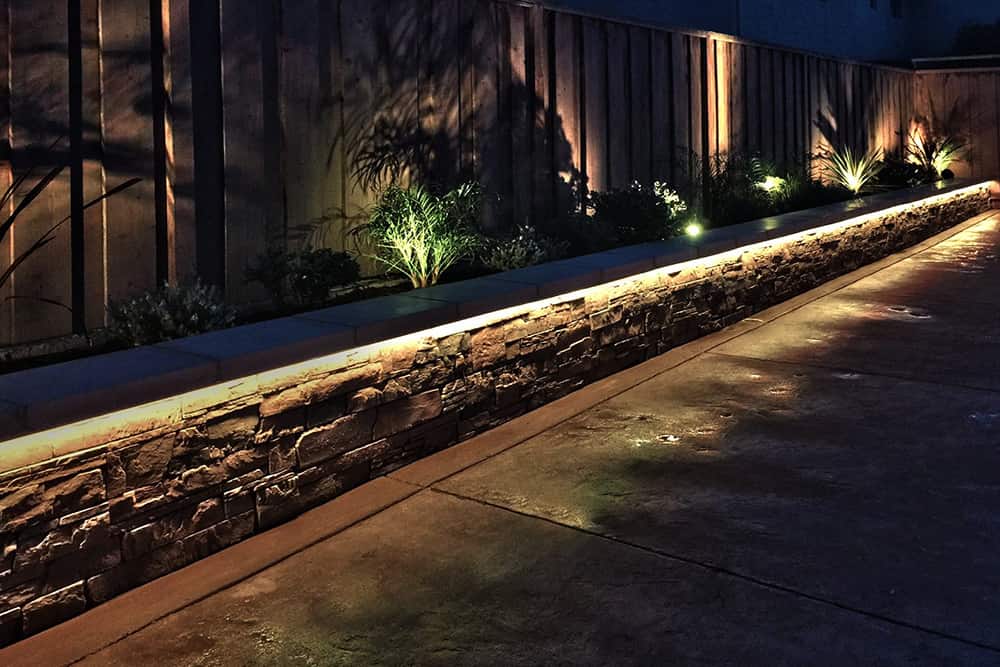
Buying Guide: Top CSP LED Strip Brands
When shopping for CSP LED strips, it’s essential to compare different brands to find the perfect fit for your needs. Here are some factors to consider and why LEDYi might be the right choice for you:
Comparing popular brands
Before making a purchase, it’s crucial to research and compare the reputation, product offerings, and performance characteristics of various CSP LED strip manufacturers. Look for reviews and testimonials from other customers to gauge product quality and reliability. LEDYi, as an industry leader, has consistently received positive feedback from customers for its innovative products and commitment to quality.
Price and performance analysis
Evaluate the cost-effectiveness of different CSP LED strips, considering factors such as luminous efficacy, color rendering, and lifespan. While it might be tempting to choose a lower-priced option, remember that a higher upfront investment may pay off in terms of energy savings and reduced maintenance costs over time. LEDYi’s products are known for their exceptional performance and long-lasting durability, making them a wise investment in the long run.
Warranty and customer support
Check the warranty terms and conditions for each brand, as well as their customer support channels and response times. Opt for brands with a solid reputation for after-sales support and assistance in case of product issues or questions. LEDYi offers comprehensive 5-years warranty coverage and excellent customer support, ensuring that you have a reliable partner to help you throughout the entire process, from purchase to installation and beyond.
By taking these factors into account and considering the benefits of choosing LEDYi, you can make an informed decision when purchasing your next CSP LED strip, ensuring a high-quality lighting solution tailored to your needs.
FAQs
To calculate the power requirements for your project, first determine the total length of LED strips you will be using. Then, check the power consumption per meter (usually expressed in watts per meter) of the specific LED strip. Multiply the length of the LED strip by its power consumption per meter to find the total wattage needed. It’s recommended to add an additional 10-20% to the total wattage as a safety margin when selecting a power supply.
Yes, CSP LED strips can typically be cut and reconnected at designated cut points, which are usually marked along the strip. You can use connectors, soldering, or other methods to reconnect the cut segments.
CSP LED strips come in various Ingress Protection (IP) ratings, which indicate their level of water resistance. For waterproof options, look for strips with an IP67 or IP68 rating.
The maximum length of a single run depends on the voltage (12V or 24V) and the specific strip’s technical specifications. As a general rule, 12V LED strips have a maximum run length of around 5 meters, while 24V strips can go up to 10 meters. For longer runs, you may need to install additional power supplies or use signal repeaters.
CSP LED strips offer several advantages over traditional LED strips, such as higher luminous efficacy, better heat dissipation, and more compact design. These features make CSP LED strips an ideal choice for various applications that require high-quality, energy-efficient lighting.
CSP LED strips have a long lifespan, typically ranging from 30,000 to 50,000 hours, depending on the quality and usage conditions.
Yes, you can use CSP LED strips in high-humidity environments. Choose a strip with an appropriate IP rating (IP65 or higher) to ensure water and moisture resistance.
The choice between 12V and 24V depends on factors such as the maximum run length, power consumption, and compatibility with other components (like power supplies and controllers). Generally, 24V LED strips are more efficient and allow for longer runs without significant voltage drop.
Yes, CSP LED strips can be used for growing plants if they have the appropriate light spectrum for plant growth. Look for LED strips specifically designed for horticultural applications, which provide a balanced spectrum of red, blue, and white light.
When selecting a power supply, consider factors such as the total wattage required (including a safety margin), input and output voltage compatibility, and any additional features like dimming or remote control capabilities.
To avoid hotspots and achieve uniform light distribution, consider using diffusers or aluminum channels to help disperse the light more evenly. Additionally, choose high-quality LED strips with closely spaced LEDs and good color uniformity.
Summary
CSP LED strips are a versatile and energy-efficient lighting solution with numerous applications and potential for future growth. By understanding the technology, features, and options available, you can choose the right CSP LED strip for your needs and stay informed about the latest developments in the industry. When making your selection, consider reaching out to LEDYi, a reputable company with a proven track record of innovation and customer satisfaction. With LEDYi’s expert guidance, you can ensure that you are investing in a high-quality CSP LED strip tailored to your specific requirements.






